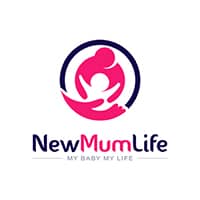A breast pump is a lactating mother’s closest pal. There are mainly two types of breast pumps- electric and manual. An electric pump has two sub-categories of single and double pumps. A variety of models are available in the market for each of the types with features catering to all kinds of requirements and priorities. But the basic steps and functioning remain the same. It is important to understand and use the right technique to express, pump, and store the breast milk so that maximum efficiency can be achieved and the mother can pump more milk effortlessly.This article aims to explain the step-by-step process of how to use breast pump, how to use electric breast pump, and how to use manual breast pump. Keep on reading ahead to get a detailed understanding.
If you have not yet checked our top picks on “The Best Breast Pumps for New Moms”, do take a look! We list the best pumps available in the market that will serve all your needs.
If you are looking particularly for electric breast pump, don’t forget to check our top products for the best electric breast pump in India.
How To Use Manual Breast Pump?
A Manual Breast Pump is a single pump that allows expressing milk from one breast at a time and the speed of pumping or suction is controlled by hand. Every different model has some unique features yet the general operations are alike. The common steps to how to use manual breast pump are:
- Ensure that the pump and all its parts are sterilized, dry, and assembled.
- Wash your hands and sit comfortably in a peaceful corner with no distractions.
- Put a warm moist towel over one breast for a few minutes then remove the towel. This will assist in the flow and stimulation process.
- Stimulate the breast with the hands by gently messaging it and squeezing it in an outward motion towards the nipple. Some milk might squeeze out which would symbolize that the stimulation is working.
- Take the pump and put the flange firmly on the nipple of one breast. Ensure that the nipple is in the center.
- Start pumping the handle slowly but steadily for a few minutes. It might take some time for the milk to flow out, so do not worry it is normal.
- Now the milk let down will begin, so after 5 minutes change the breast and repeat the same process. Keep shuffling till the breasts have been emptied or the right amount of milk has been collected in the attached bottle.
- Remove the flanges and clean the breast area with a moist towel.
- Sterilize the pump and all the parts and let them air dry.
With the continuous usage of the breast pump, the expression would become easier day by day and would take less time and effort in the whole process.
How To Use Electric Breast Pump?
An electric breast pump is a single or double pump that allows expressing milk from one or both breasts at a time respectively. The suction and pumping speed is controlled by a motor operated by batteries or by electricity. Every distinct model has some special features yet the general operations are alike. The common steps to how to use electric breast pump are:
- Ensure that the pump and all its parts are sterilized, dry, and assembled.
- Wash your hands and sit comfortably in a quiet corner with an electrical power outlet and no disturbance.
- Put the breast shield over one breast and press firmly to seal. Check that it is centering the nipple. The tunnel size should be larger than the nipple size. If using a double pump, then put the shield on both breasts.
- Relax and think about the beautiful moments of your tiny tot as it would assist in the stimulation process.
- Start the pump at low speed and low suction; these can be increased gradually as per requirement. Do not worry if it takes some minutes for the milk to flow out as it is normal.
- Pump for 15 minutes or till you have collected the requisite milk in the bottle. If using a single pump, then switch and repeat the process on the other breast as well.
- When the breasts have been emptied or the required milk has been collected, clean your breasts with a moist towel.
- Unplug the pump, disassemble it, sterilize all the parts, and put them for air drying.
With practice, pumping can become second nature and can conveniently be done together with reading or any light activity.
When to Pump?
There are certain times in a day that are ideal for pumping breast milk as the supply at that time is strong, so these times should be fully utilized:
- Early morning is the best time as there is a maximum flow.
- Between two breastfeedings, just leave half an hour after and before breastfeeding so that the supply picks up.
- Whenever the mother is free from house or office work, she should pump for the next feeds.
- When leaving the baby for long durations like going to the office or out of town, then extra pumping should be done and stored in the fridge or freezer.
Pumping in advance helps the mother stay mentally relaxed that her baby would be fed on time whether she is away or nearby.
Is Pumping Painful?
Ideally pumping breast milk does not hurt the mother at all. But if any kind of pain persists while pumping then you should go through and read the instructions again for any important step being missed out. Check that the pump, flanges, and shield are of the correct size and are properly attached while pumping. If the pumping is still hurting, then an expert should be immediately consulted.
Practical Guidance for Pumping Mothers
Whether you are directly breastfeeding or pumping and then bottle-feeding the baby, there can be concerns regarding the low or oversupply of milk. But do not worry, with perseverance and smart work, you can find the right way to deal with supply issues.
Few important and practical notes for mothers:
- Choose the breast pump after thorough research and as per specific requirements of size, comfort, and fitting.
- Read the instructions carefully so that the pump can be operated smoothly and with full efficiency.
- Sit with water and snacks while pumping as it might take long and then you would not have to get up.
- For a better milk supply, eat a balanced diet of fresh fruits, seasonal vegetables, nuts, milk, and milk products.
- Stay hydrated and drink a glass of water/milk/juice before and after breast pumping.
- If there are any issues while pumping or expressing milk, then resolve them at the earliest by consulting a lactation expert.
- If the baby is premature or there are twins or multiple babies, in such cases it would be advisable to take the guidance of a lactation expert as well.
The most important thing to remember is to stay happy and positive throughout your feeding journey.
How to Store the Pumped Milk?
If the expressed milk is not for immediate consumption by the baby then it should be stored in the following manner:
- At room temperature - If the milk would be consumed within the next 4 hours then it can be kept in a room with a normal temperature of 25˚C or below. Ensure that the milk container is away from dust, heat, and direct sunlight.
- In a cooler, icebox, or a thermocol box with ice-packs - Milk can be stored for up to 24 hours.
- In the fridge - Milk can be stored for up to 5 days where the temperature is 5˚C or below and it is kept at the back in the compartment.
- In the freezer - Milk can be stored for up to 2 weeks.
- In a deep freezer - Milk can be stored for up to 6 months.
In all the above cases, it is paramount that the containers are sterilized and are properly secured with lids. Always check the quality of the milk stored before serving it to the baby.
The more you pump, the more will be the supply. So, even the breastfeeding mothers can pump so that their supply remains good. The ideal scenario is to express in advance to be assured that the baby is fed on a timely basis. A well-fed baby is more active, happy, and playful, has more wet diapers, and of course, sleeps well. We hope our guide caters to all your needs to know about how to use a breast pump, how to use manual breast pump, and how to use electric breast pump. Happy Feeding!
About The Author

NewMumLife Team
NewMumLife is a parenting website for moms, dads and child care. We aim to offer a place to connect parents and parents-to-be for all types of parenting advice and suggestions to the questions they normally face. Our content is for the parents and by the parents where they share their personal experiences to benefit our parenting community.

